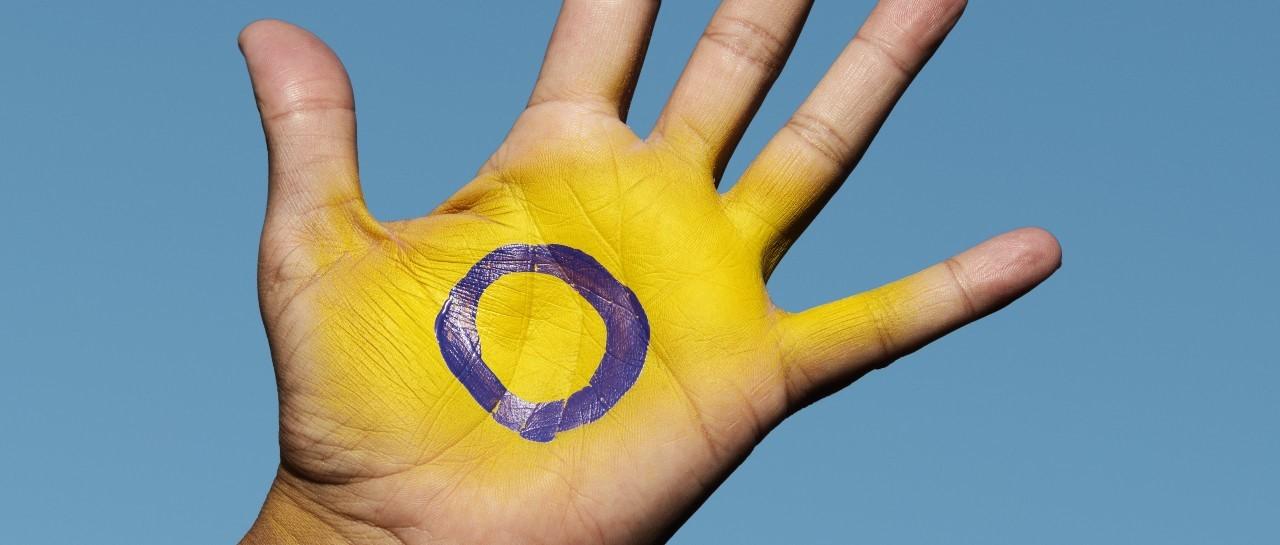
How to bind your chest safely
Peer reviewed by Dr Sarah Jarvis MBE, FRCGPLast updated by Emily Jane BashforthLast updated 23 Nov 2021
Meets Patient’s editorial guidelines
- DownloadDownload
- Share
- Language
- Discussion
Chest binding is a practice used by LGBTQ+ people to reduce the appearance of a 'feminine' chest by flattening the breasts. Binding is shown to have positive effects on the mental health of people struggling with gender dysphoria (a sense of unease due to a mismatch between biological sex and true gender identity). However, unsafe binding carries significant health risks. Therefore, it's crucial it is done safely.
In this article:
Continue reading below
What is chest binding?
Chest binding is something that is designed to minimise the appearance of a person's breasts and create the appearance of a flatter chest. It is also known as breast binding.
Consultant plastic and cosmetic surgeon Mr Paul Banwell explains that a chest binder is essentially a compression undergarment that binds the breasts to the body.
"The binder pushes down on the skin and tissue that creates bumps on the chest in order for them to look and feel flatter."
Binding is used by transgender, non-binary and genderfluid people to make their presenting gender and gender identity more compatible. It can also just generally help people accept themselves and feel more comfortable in their bodies. It is not used by all trans and gender non-binary people and chest binding is not a prerequisite of being non-binary. However, it can be a common step in someone's female-to-male transition.
What are common methods used for chest binding?
There are a number of different ways that people bind their chest.
Mr Banwell explains the common methods of binding:
Binders - this is a piece of compression clothing designed specifically to flatten your chest. They come in varying lengths depending on personal preference.
Kinetic tape - this is a type of medical tape that can be used for chest binding. You should never use other tapes as binders (such as plastic or duct tape) as these could restrict breathing as well as irritate the skin.
Sports bras - a high-compression sports bra can also work as binder. It won't provide as much compression as a specially designed binder, but it can be a first step.
He says that trial and error may help to decide which binder is right for you.
Some producers of safe binders include:
Underworks.
GC2B.
Spectrum.
Continue reading below
What is the safest way to bind your chest?
"The safest way to bind the chest is with a binder designed for that purpose, whether it's a sports bra or chest binder," says Mr Banwell.
"The general advice is that you shouldn't wear a chest binder for more than eight consecutive hours - otherwise, you may experience back pain, breathing problems and other side effects."
Some other tips for binding
Don't exercise while wearing a binder, as this is a time when you need to be able to move without restrictions.
Make sure your binder fits properly: it should still allow you to breathe freely and shouldn't be too tight.
Bind less if you are planning to have top surgery, as this can reduce skin quality and make the procedure more complicated.
Listen to your body and remove your binder when you have breathing troubles or feel in any pain. It can be tempting to bind for long periods of time if you find it lessens your gender dysphoria, but it's important to take care of your body.
How can your health be affected by unsafe binding?
There are a number of risks associated with using a chest binder, particularly if it is not done safely.
These risks include:
Restricted breathing if the binder is too tight.
Chafed, broken skin.
Overheating.
Development of bacterial and fungal infections.
Bruising.
Damaged ribs.
Two studies published in 2018 observed 1,800 people who chest bind.
Across both studies, 89-97% of people reported experiencing at least one negative symptom from binding.
Their side effects included swelling, scarring, tenderness, itching, chest and back pain and shortness of breath.
However, many people do feel better mentally and emotionally when they bind, as it increases self-esteem, improves confidence in public and reduces anxiety.
Therefore, it is important to bind safely and correctly, and to seek advice on how to do this. Mr Banwell stresses it is especially vital to seek medical help if you have an existing, underlying condition such as asthma, scoliosis or lupus.
However, people often resort to unsafe measures, despite being aware of the dangers. While there is not extensive research into why this occurs, it's likely this is because they're navigating their gender identity. Gender dysphoria can lead to depression, and anxiety, and really limit a trans person's quality of life. So, it's understandable why many explore various methods in a bid to manage this.
Continue reading below
How can someone's life be positively impacted by chest binding?
Chest binding can be life-changing in a positive way. If someone struggles with chest dysphoria, it can cause great discomfort and stress. Therefore, chest binding can help trans and non-binary folk feel more validated and true to themselves. The practice can also make them feel safer in public and authenticate their gender identity when what the rest of the world sees on the outside marries up with how they feel on the inside.
Although they identify as neither male nor female, binding the breasts can prevent non-binary people from being perceived as 'female'. This is a critical aspect of living authentically as a non-binary person.
A 2018 study on minority stress and being misgendered found that those who experienced consistent misgendering had higher rates of psychological distress. Therefore, chest binding can reduce the chances of this happening, thus allowing people to go about their days with less fear.
Where can you seek support if you are struggling with your gender?
Mr Banwell highlights the importance of seeking medical advice if you're struggling with your gender identity and want some advice.
It's a good idea to find a trans-friendly doctor you can ask about chest binding and alternative options, such as counselling, medication for hormones, or surgery.
For further support, you can contact an LGBTQ+ helpline or access their websites for resources and webchats.
Mermaids 0808 801 0400 - supports transgender people under the age of 19 and their families. Helpline open weekdays 9 am-9 pm.
Stonewall 08000 50 20 20 - offers information and advice for LGBTQ+ people on a range of issues.
Switchboard 0300 330 0630 - a listening service for LGBTQ+ communities with information and support.
Mindline Trans+ 0300 330 5468 - offers a free, confidential listening service for trans and non-binary people, as well as their friends and families.
Patient picks for Gender identity

Healthy living
What does it mean to be intersex?
While you may have heard the word 'intersex', it can be difficult understanding what it means unless you have done some reading around the topic. Simply put, it is when there is a difference between the inside and outside genitals.
by Emily Jane Bashforth

Healthy living
Debunking lesbian stereotypes and myths
There are many misconceptions and lesbian stereotypes surrounding how they look and act, what they're interested in and the reality of their relationships. As result, young people often struggle to accept their own identities, and lesbians can be treated unfairly or even outcast from environments completely.
by Emily Jane Bashforth
Continue reading below
Article history
The information on this page is peer reviewed by qualified clinicians.
23 Nov 2021 | Latest version

Ask, share, connect.
Browse discussions, ask questions, and share experiences across hundreds of health topics.

Feeling unwell?
Assess your symptoms online for free
Sign up to the Patient newsletter
Your weekly dose of clear, trustworthy health advice - written to help you feel informed, confident and in control.
By subscribing you accept our Privacy Policy. You can unsubscribe at any time. We never sell your data.